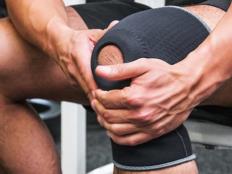
When it comes to working out, more isn't always better. Hitting the gym too hard can be a one-way ticket to burnout and injury, but do you really need rest days every week? If so, how often? The answer isn't always clear-cut, but we have some guidelines to help you figure it out.
But why do you need rest days in the first place? Pushing through a tough workout produces microscopic muscle tears. This creates an inflammatory response that kicks your immune system into gear and ultimately helps you recover. As the muscles repair themselves, they become stronger and ultimately make you fitter and faster. Heads up though—if that inflammatory response goes into overdrive (caused by working out too hard, too often), you could end up getting injured or sick. That, in a nutshell, is why rest days are so important.
How Often Do You Need Rest Days?
Whether you take three rest days or zero rest days each week will likely depend on your current fitness level, as well as your goals. Elite marathoners often run every single day when they're training for a goal race—however, at least one of those days is often at a very easy effort. For an Olympian, a slow jog or gentle swim once a week might be enough of a "rest day." On the other hand, if you're prone to injury, aren't able to get a full night's sleep or have an active job, you may need multiple complete rest days every week. To find your sweet spot, evaluate your physical and mental state: Do you feel energized or sluggish during workouts? Are you excited to hit the gym or dreading it? Do you have any nagging aches or pains? Listen to your body and take more rest days when you need them.
Should You Take a Rest Day or Push Through?
A bit of soreness should be expected after a workout—if it's mild and dissipates after a warm up, consider cross-training or doing an easier version of your regular routine. If you're experiencing limited mobility or stiffness after a workout, give yourself plenty of complete rest days until the soreness subsides. You can try some easy walking or foam rolling if you feel up to it, but otherwise, recovery is likely what you need.
The Benefits of a Complete Rest Day vs. Active Rest Days
A rest day doesn't necessarily mean you have to lie in bed all day. Instead, try embracing the concept of an active rest day. A bit of movement can increase blood flow and push nutrients to your muscles, thereby reducing soreness and speeding recovery. Consider trying a gentle yoga class, an easy bike ride, a brisk walk or even some yard work.
On the other hand, sometimes a day of rest, recovery and laziness is exactly what you need.
Remember: Fitness gains are made after the workout as your muscles work to rebuild themselves and become stronger. A rest day isn't a waste of time. It's an essential part of a balanced exercise routine.
READ THIS NEXT: 6 Unexpected Ways to Recover Faster
About the Author

Get ACTIVE on the Go


Couch to 5K®
The best way to get new runners off the couch and across the finish line of their first 5K.
Available for iOS | Android






Discuss This Article